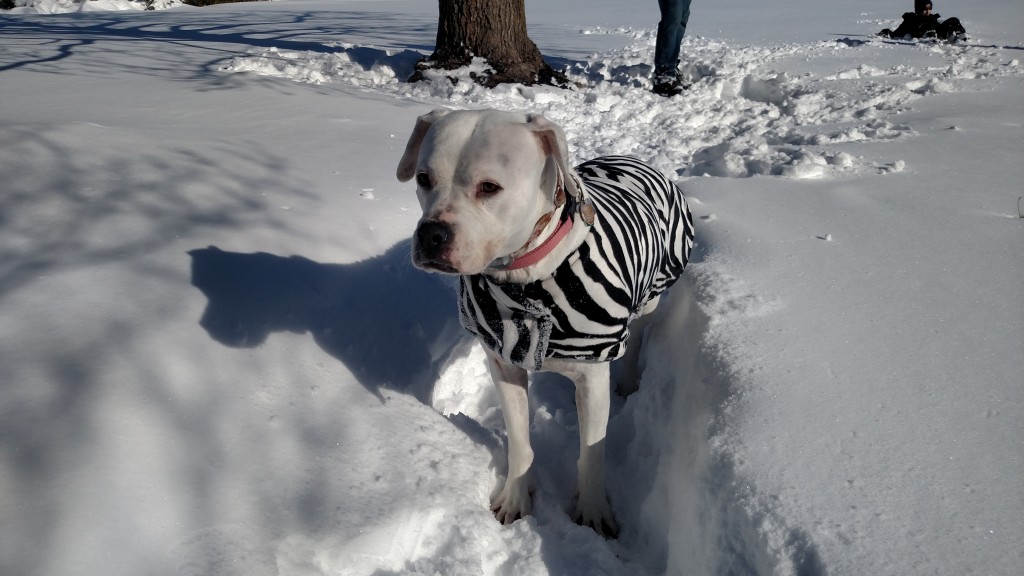
Dr. Kardos’s fourth child wears her coat in the snow without fuss.
There is snow on the ground, so every morning I ask my elementary school-aged son if he wears gloves and a hat at recess. Every morning I get back the same blank stare and the question, “Why?”
It’s an age-old battle between parents and kids. Parents insist the kids are underdressed and the kids insist they are overdressed. In fact, I remember in fourth grade many an embarrassing moment when my mother would suddenly appear with mittens at the bus stop. So how can parents decide how warmly to dress their children?
Infants are particularly poor at regulating their own temperatures. In general for cool weather, dress a baby in one more layer of clothing than you are comfortable wearing. Another good way to keep a newborn from losing too much heat is to keep the hat on for a couple of weeks. It’s not an old wives tale; people do lose a fair amount of heat through their heads.
However, beware of over-swaddling. Over-heating has been suggested as a factor in death from SIDS (Sudden Infant Death Syndrome). If your partner insists on keeping the house the temperature of a sauna and you are sweltering all year, then dress your baby in a simple onesie. Just as infants have difficulty regulating body temperature in the cold, they also have difficulty regulating their temperature in heat. In general, if you feel cold, your baby will feel colder. If you are warm, your baby will feel warmer than you do. There is an official indoor temperature recommendation for daycare centers: in cold weather, keep indoor temperatures to 68-75F.
Sleep always seems to bring out red cheeks and sweaty heads in toddlers. Are they too hot or cold? As you peek in on them after tucking them to bed, feel their hands and cheeks. Warm (but not flushed) cheeks mean they will be comfortable even if their hands are a bit cool.
For older kids, simply dress them the same way you dress yourself. Make sure areas prone to frostbite such as toes, ears and fingers stay warm. Quick tidbit: do not re-warm nearly frostbitten areas by massaging. The rubbing action causes more injury. Instead, place the area in warm water.
Sorry, you can’t use the rational, “Dress warmly or you will catch a cold.” Cold temperatures do not cause colds. Germs cause colds. However, there is one study on mice that suggests cooler noses allow the rhinovirus (a common cold germ) to grown more easily. Also, there is a phenomenon called nonallergic rhinitis which manifests itself as a drippy nose which can be set off by cold air. Likewise, inhaling cold air can set off coughing in kids with asthma. For more about the health benefits and hazards of cold weather for both kids and adults, check out this article from Harvard Health Publications.
Why it’s not “cool” to stay warm, I’ll never understand. At least for the older boys, parents don’t need to take into account the weather. The kids will wear hoodies whether it’s seven or seventy degrees outside.
Naline Lai, MD with Julie Kardos, MD
©2016 Two Peds in a Pod® revised 1/2019
(For a laugh: we love this tongue-in-cheek post about how kids dress for cold weather).



